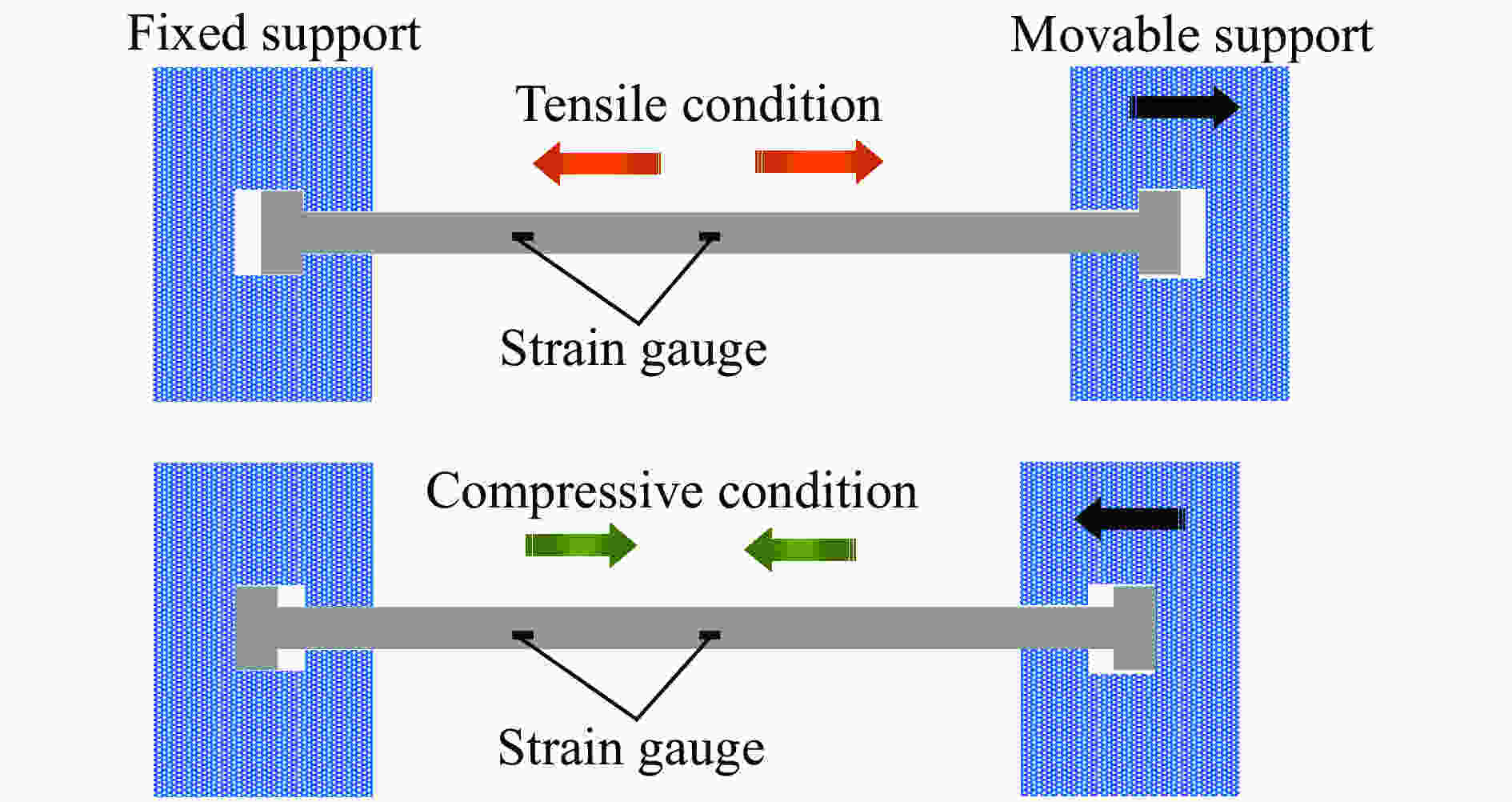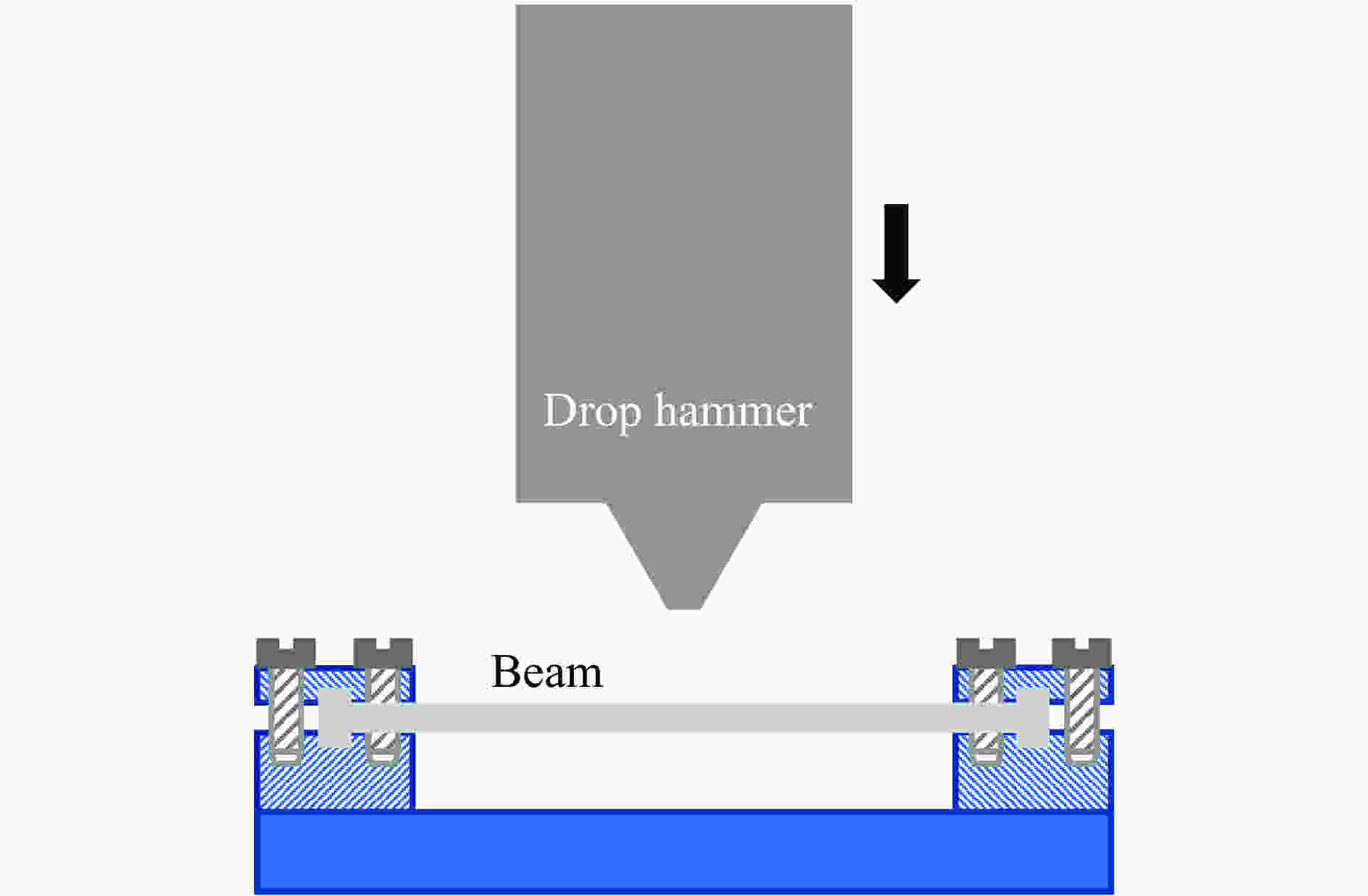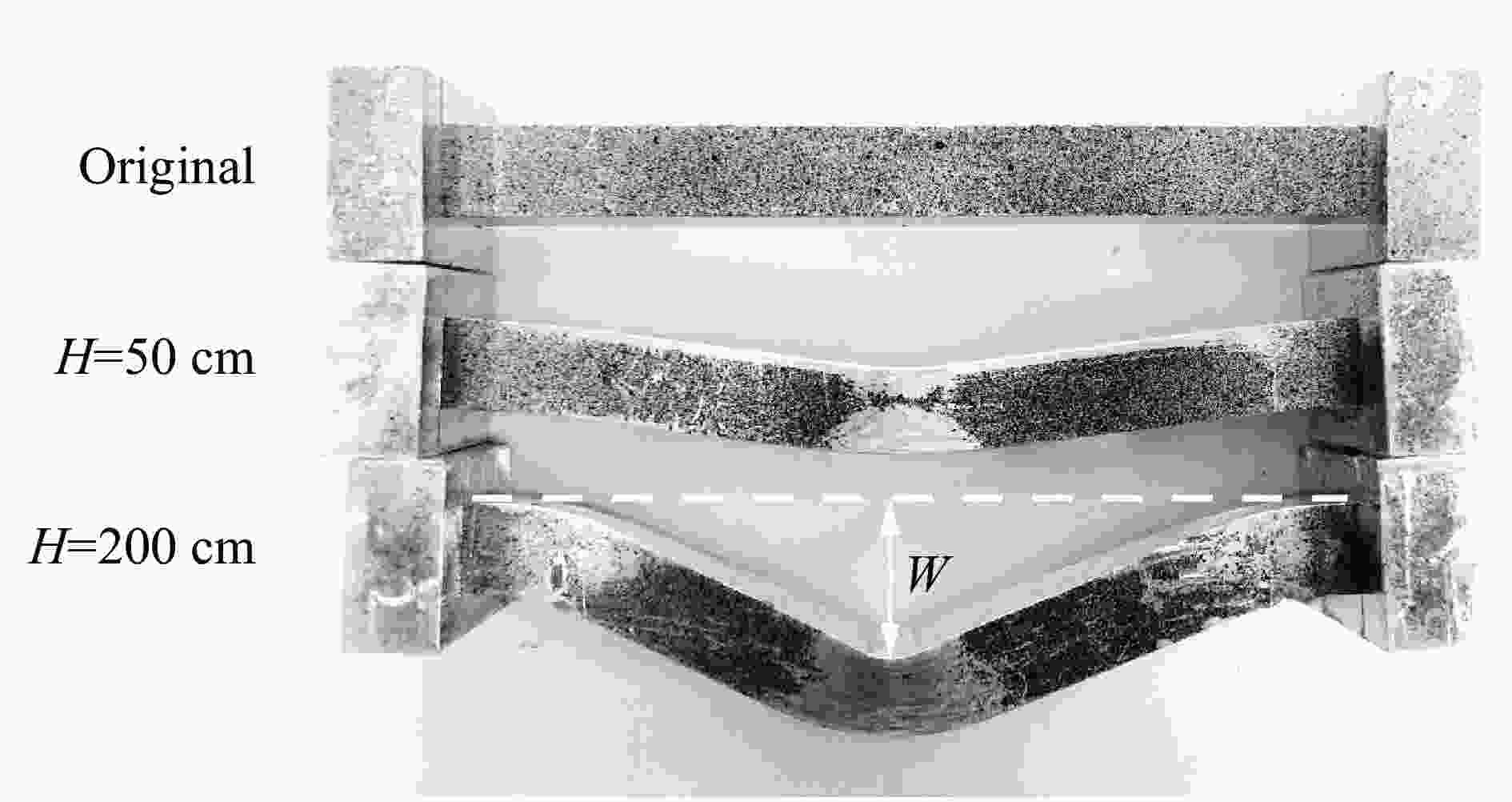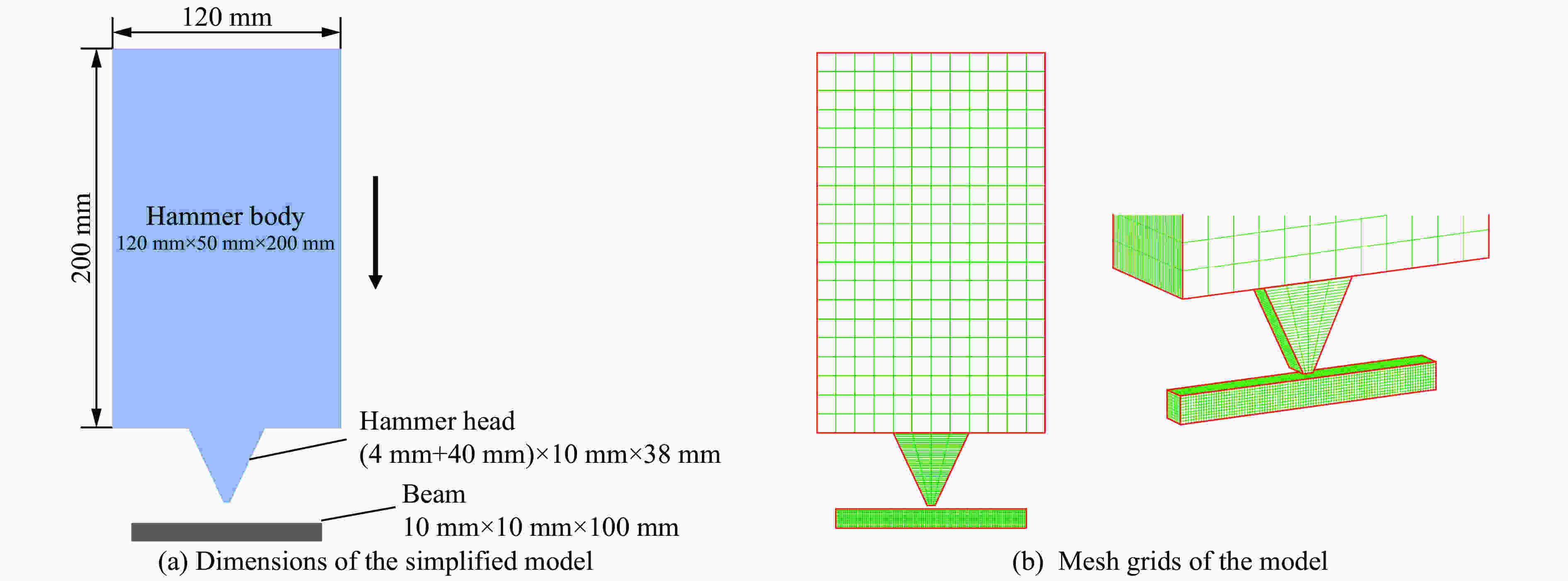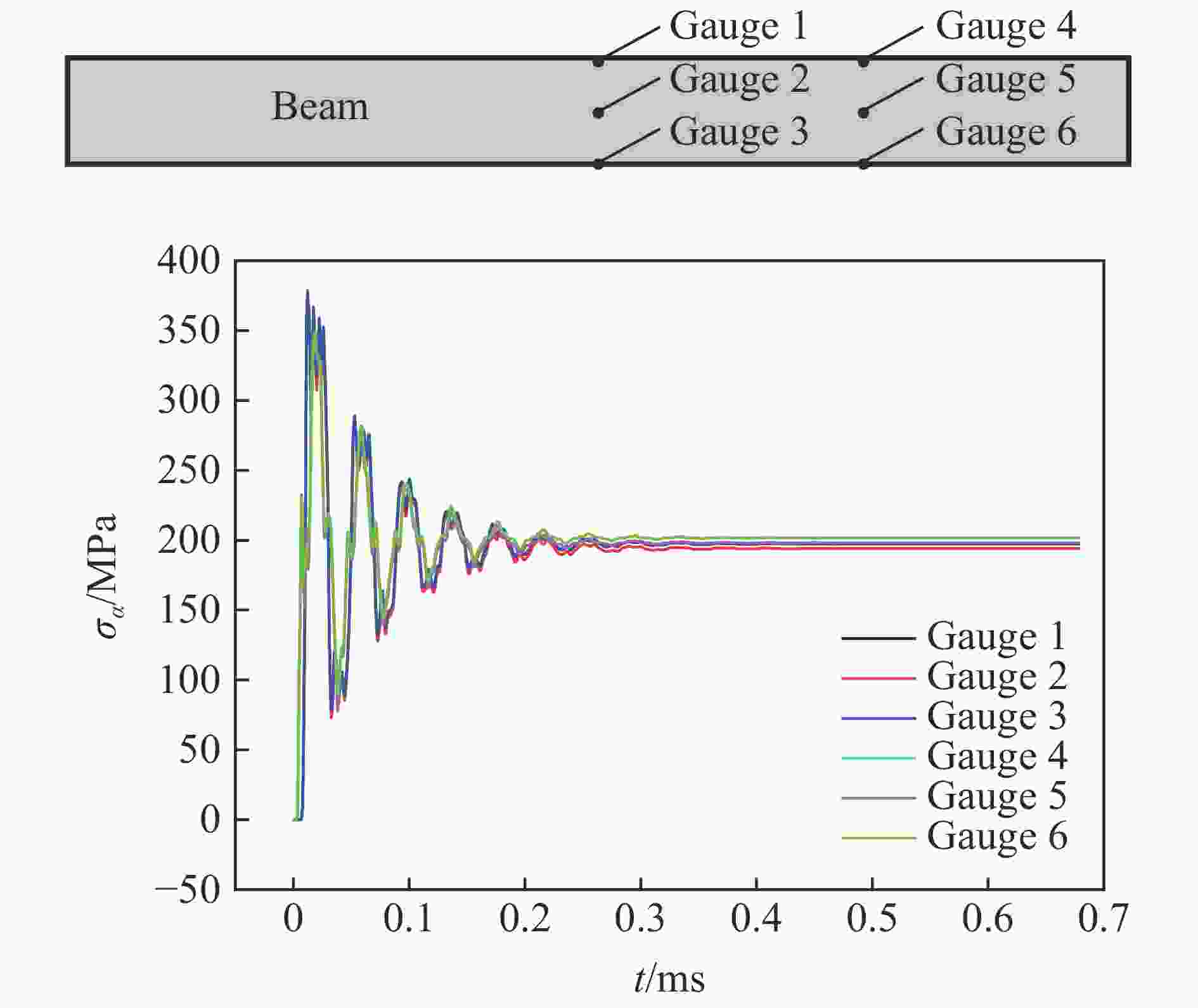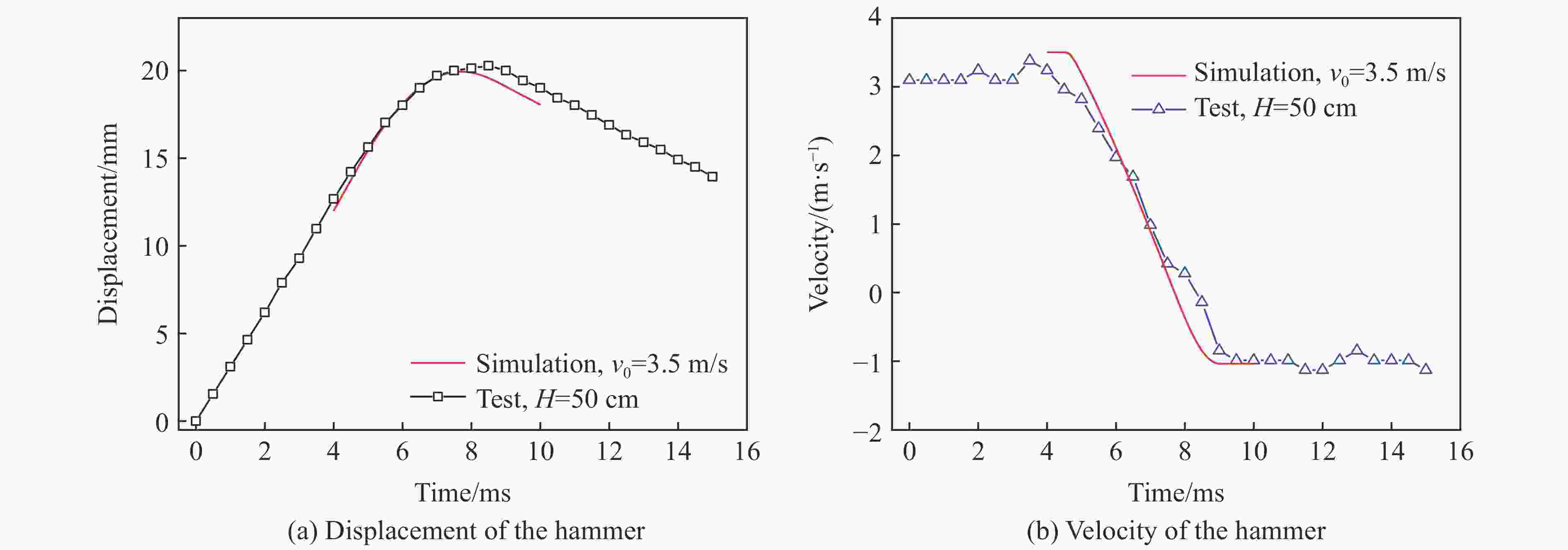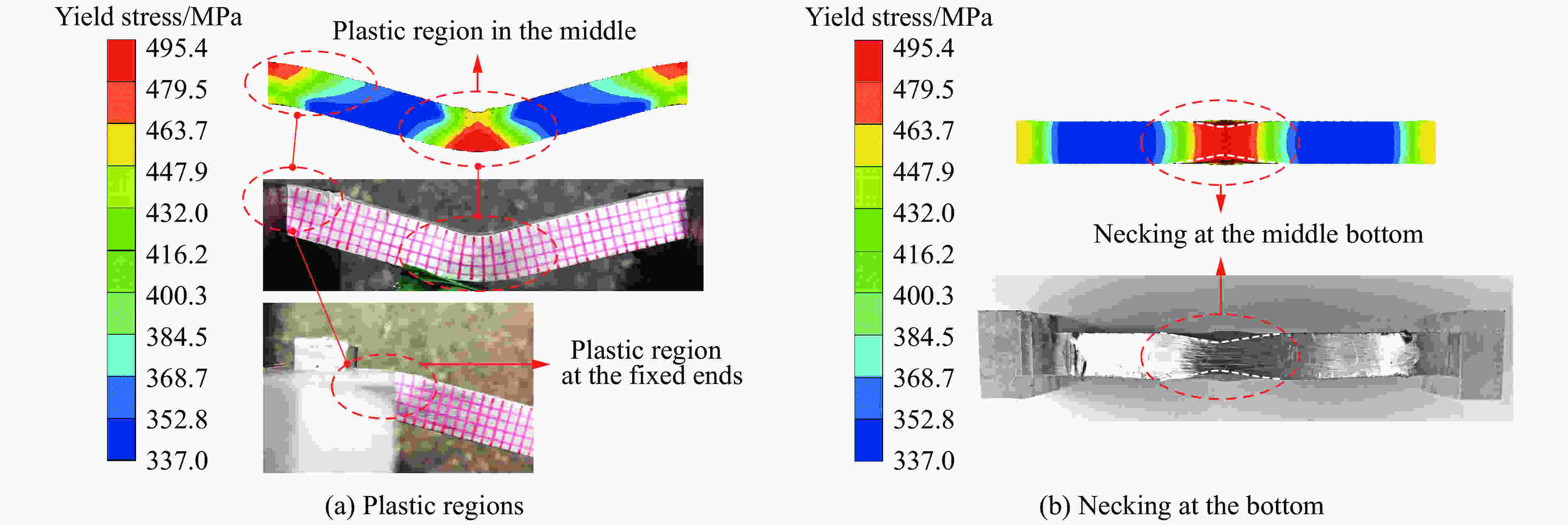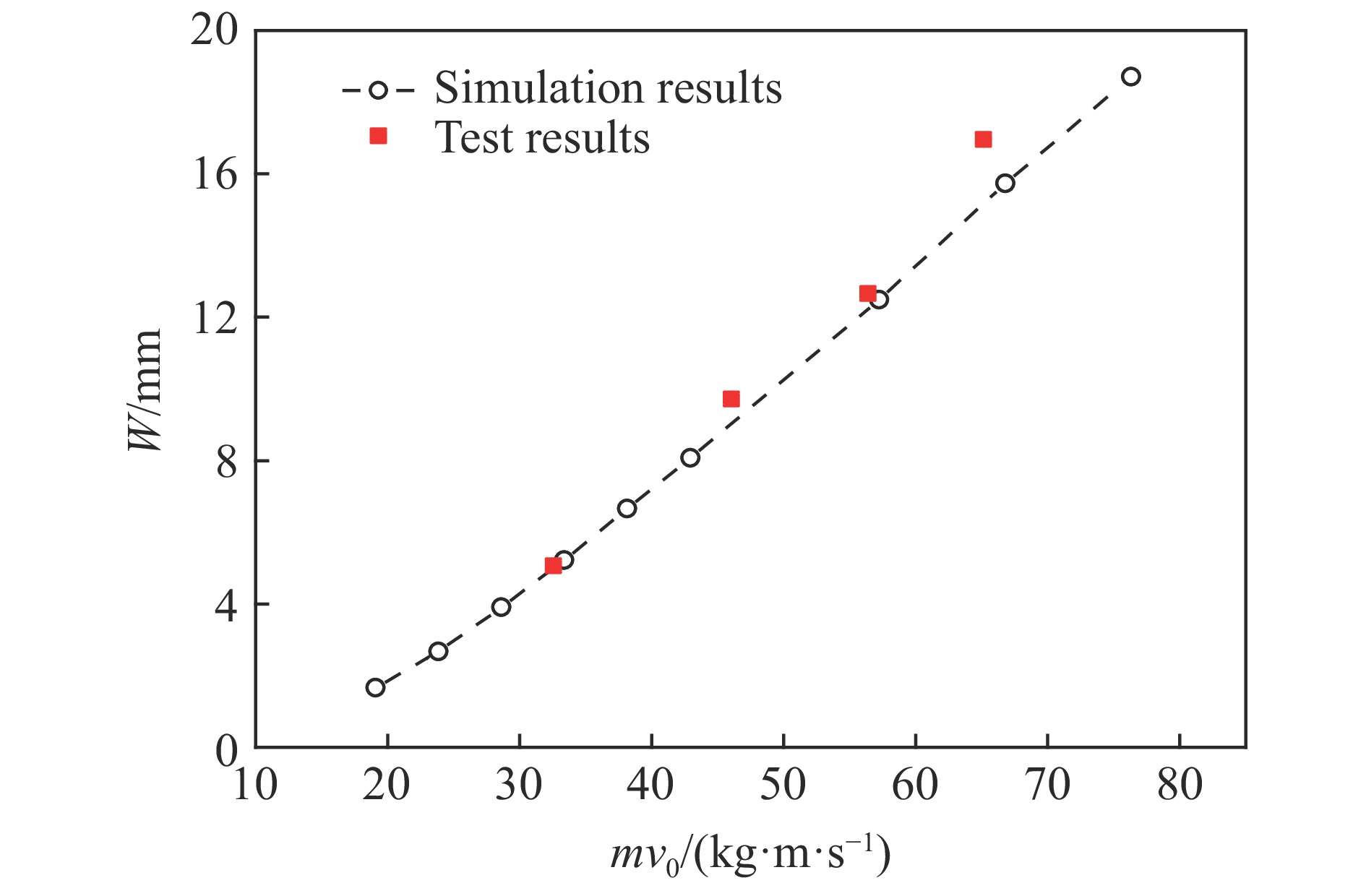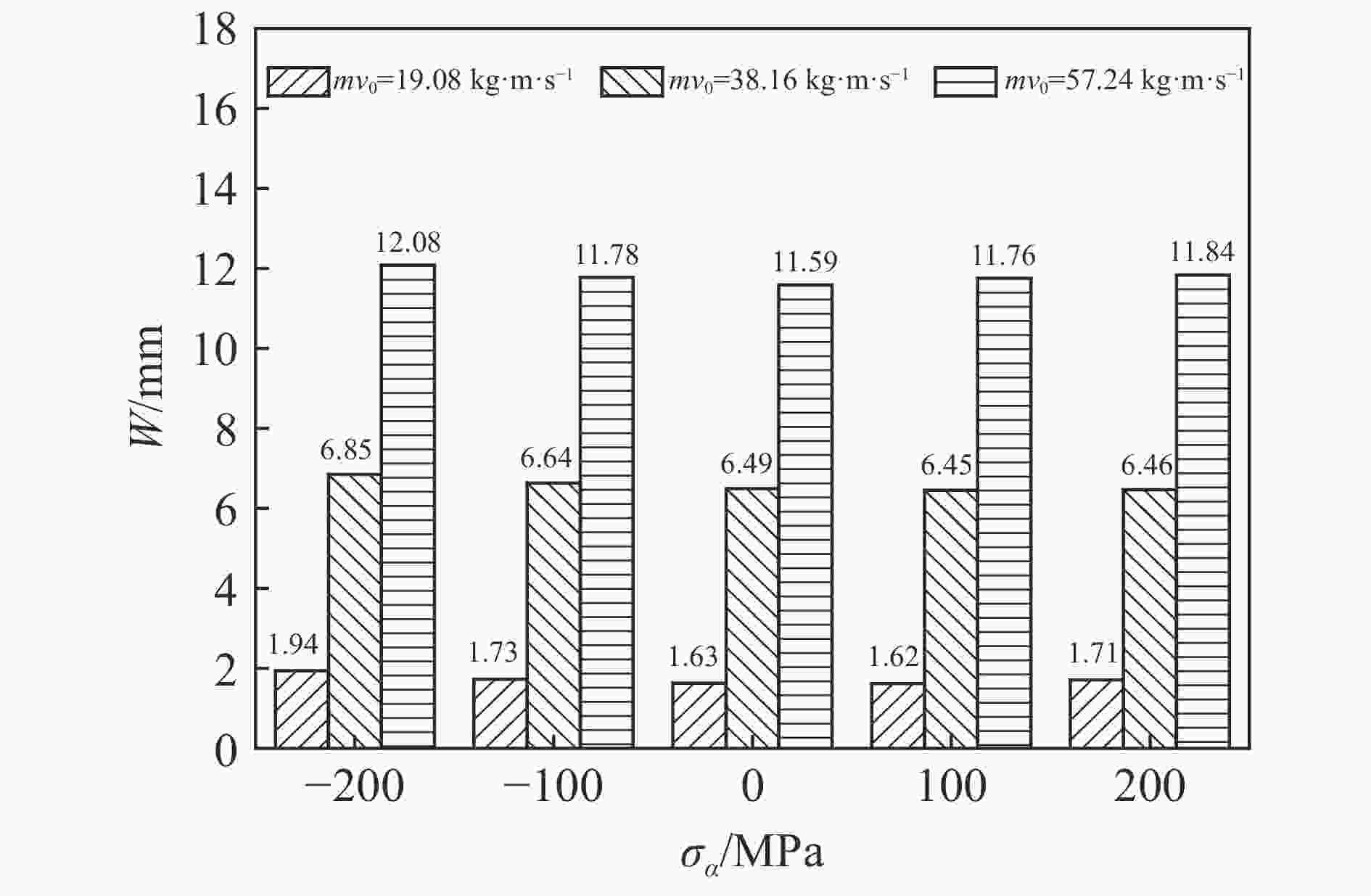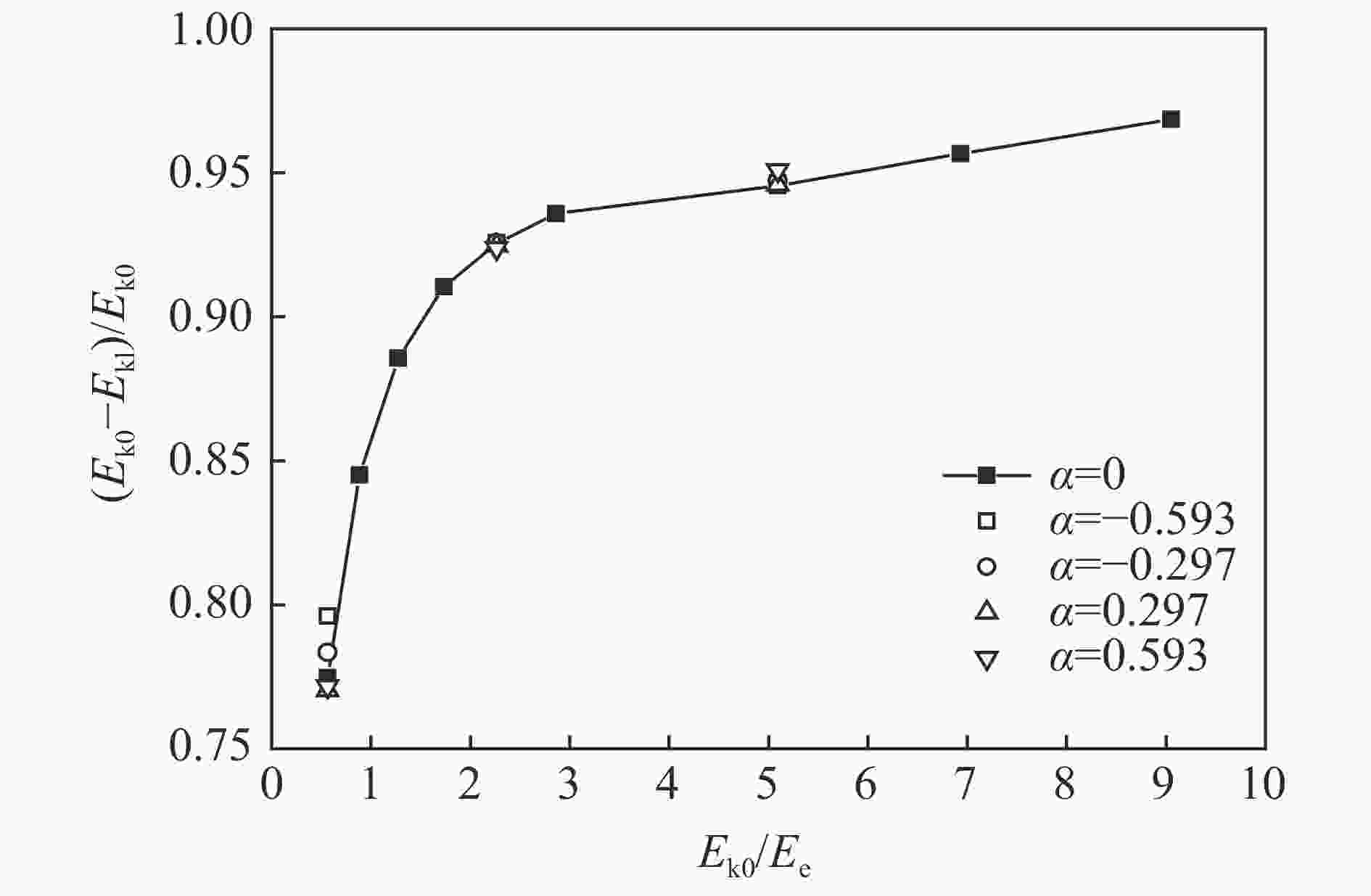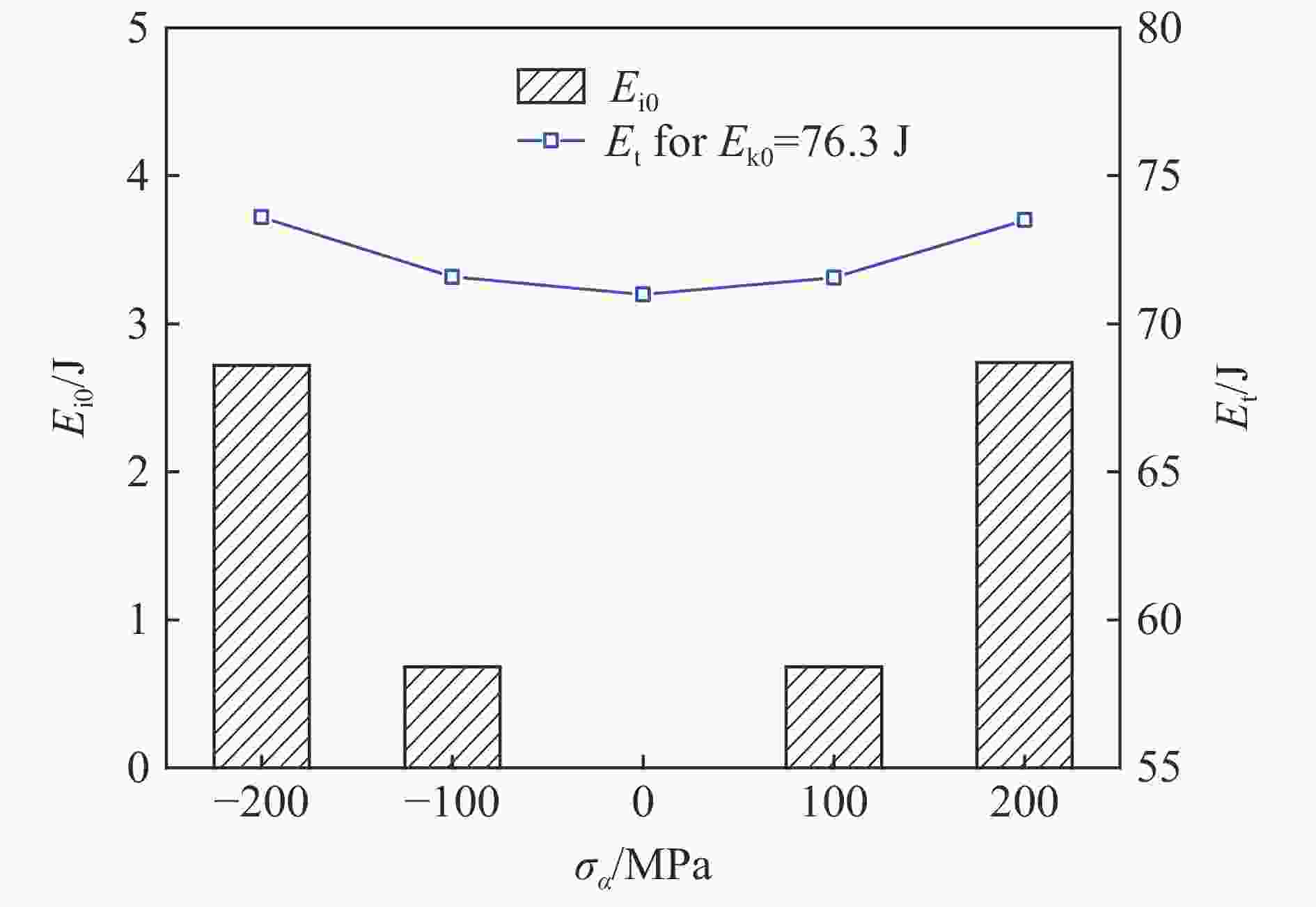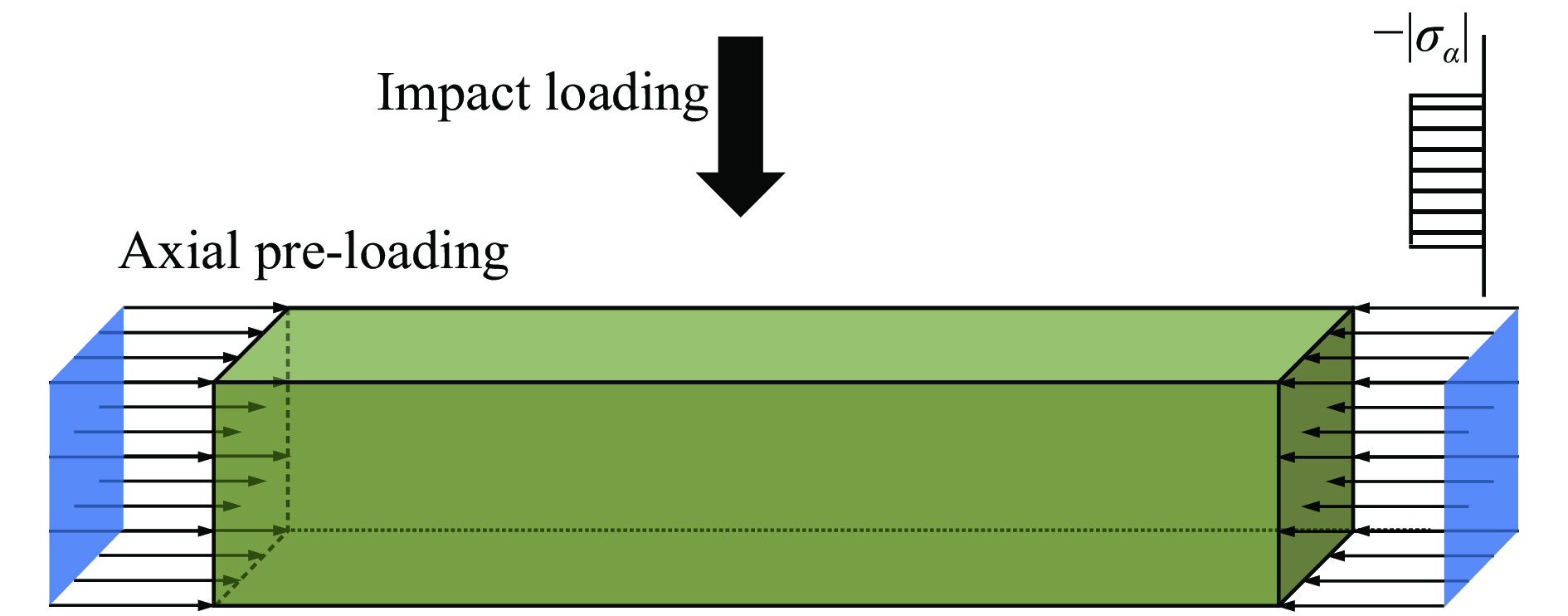On impact response of a prestressed metal beam
-
摘要: 工程结构在使用过程中,大部分构件处于预应力状态。为了理清预应力对金属梁在冲击载荷作用下响应的影响机理,对不同轴向预应力条件和不同冲击强度下金属梁的塑性变形规律进行了研究。通过自主设计的预应力加载装置和落锤试验机,实现对金属梁的预应力控制和冲击加载;借助商用软件建立数值模型,对相关工况进行模拟。数值模拟结果与试验结果有较好的一致性。通过对梁的剩余挠度进行对比发现,压预应力状态下的梁受冲击载荷作用所产生的中点剩余挠度会比无预应力时更大;而拉预应力状态下的梁,挠度的变化量与预应力之间没有较一致的规律。从能量角度进行分析发现,梁的塑性变形能来自外加动能和初始内能,外加动能的能量比越高,梁的能量吸收率就越高,且在低能量比时,压预应力下的能量吸收率相对较高,拉预应力下的相对较低;高能量比时,预应力对能量吸收率几乎无影响。压预应力下,梁的极限弯矩增大,长度缩小,增大了的塑性变形能分布在长度缩小了的梁内,必然会导致更大的剩余挠度;拉预应力下,梁的极限弯矩减小,长度增大,增大了的塑性变形能分布在长度增大了的梁内,剩余挠度则没有显而易见的规律。这在一定程度上解释了预应力对冲击载荷作用下金属梁变形的影响机理。Abstract: During the service time of engineering structure, most structural members are under prestress conditions. In order to clarify the effect mechanism of prestress on the response of metal beams subjected to impulsive loading, the plastic deformations of metal beams under different axial prestress conditions and different impact strength were studied. The prestress conditions were controlled by a self-designed prestress loading device while the impact loadings were realized by the drop-hammer method. Numerical models were also established to simulate the related test conditions. The numerical results are in good agreement with the test results. By comparing the residual deflections of the beams, it is found that the middle-point residual deflection under compressive prestress is larger than that without prestress, and there is no regular rule between the deflection and prestress under the condition of tensile prestress. From the perspective of energy, it is found that the plastic deformation energy of the beam comes from the external dynamic energy and the initial internal energy. The higher the external kinetic energy ratio is, the higher the energy absorption rate of the beam will be. At a lower external kinetic energy ratio, the energy absorption rate of the beam is relatively higher under compressive prestress, and relatively lower under tensile prestress. While at a higher external kinetic energy ratio, the prestress has little effect on the energy absorption rate. Under compressive prestress, the limit moment increases while the length decreases, and the increased plastic deformation energy is distributed in the beam with reduced length, which will inevitably lead to larger residual deflection. Under the tensile prestress, the limit moment decreases while the length increases, and the increased plastic deformation energy is distributed in the beam with the increased length, for which the residual deflection has no obvious rule. This explains to a certain extent the effect mechanism of prestress on the deformation of the metal beam subjected to impact loading.
-
Key words:
- metal beam /
- prestress /
- impact response /
- residual deflection
-
表 1 落锤试验的工况
Table 1. Conditions of drop-weight tests
工况 H/cm ΔU/mV 1 50 0 2 100 0 3 150 0 4 200 0 5 100 −310 6 100 −410 7 100 350 8 100 450 表 2 不同试验工况下梁中点的剩余挠度
Table 2. Residual deflections at the middle points of the beams under different test conditions
工况 H/cm ${v_0}$/(m·s−1) ΔU/mV $\sigma _\alpha$/MPa W/mm 1 50 3.13 0 0 5.06 2 100 4.43 0 0 9.71 3 150 5.42 0 0 12.66 4 200 6.26 0 0 16.96 5 100 4.43 −310 −44 9.78 6 100 4.43 −410 −58 10.48 7 100 4.43 350 36 9.70 8 100 4.43 450 63 8.90 表 3 材料的基本参数
Table 3. Basic parameters for selected materials
材料 ρ0/(kg·m−3) E/GPa µ As/MPa Bs/MPa ns C ms 钢 7.896×103 211 0.29 350 275 0.36 0.022 1.00 铝 2.77×103 73 0.33 337 343 0.41 0.01 1.00 -
[1] MENKES S B, OPAT H J. Broken beams: tearing and shear failures in explosively loaded clamped beams [J]. Experimental Mechanics, 1973, 13(11): 480–486. DOI: 10.1007/BF02322734. [2] JONES N. Plastic failure of ductile beams loaded dynamically [J]. Journal of Engineering for Industry, 1976, 98(1): 131–136. DOI: 10.1115/1.3438805. [3] LIU J H, JONES N. Experimental investigation of clamped beams struck transversely by a mass [J]. International Journal of Impact Engineering, 1987, 6(4): 303–335. DOI: 10.1016/0734-743X(87)90097-2. [4] YAKOV B H. Failure of an axially compressed beam with uncertain initial deflection of bounded strain energy [J]. International Journal of Engineering Science, 1993, 31(7): 989–1001. DOI: 10.1016/0020-7225(93)90107-6. [5] ORYNYAK I V, KRASOWSKY A J. The modelling of elastic response of a three-point bend specimen under impact loading [J]. Engineering Fracture Mechanics, 1998, 60(5−6): 563–575. DOI: 10.1016/S0013-7944(98)00034-4. [6] XING Y F, QIAO Y S, ZHU D C, et al. Elastic impact on finite Timoshenko beam [J]. Acta Mechanica Sinica, 2002, 18(3): 252–263. DOI: 10.1007/BF02487953. [7] KURT M, CHEN H, LEE Y S, et al. Nonlinear system identification of the dynamics of a vibro-impact beam: numerical results [J]. Archive of Applied Mechanics, 2012, 82(10−11): 1461–1479. DOI: 10.1007/s00419-012-0678-5. [8] IVANOV L D. Change of steel’s yield stress over ship’s service life and its effect on the first yield hull girder bending moment [J]. Transactions of the Royal Institution of Naval Architects Part A: International Journal of Maritime Engineering, 2013, 155(3): 153–159. [9] CHENG B, CAO X E, YE X H, et al. Stringer longitudinal bending-induced fatigue failure of stringer-to-floor beam welded connections in orthotropic steel railway bridge decks [J]. Journal of Bridge Engineering, 2019, 24(6): 04019055. DOI: 10.1061/(ASCE)BE.1943-5592.0001428. [10] JONES N. Structural impact [M]. 2nd ed. New York: Cambridge University Press, 2012: 86−102. -






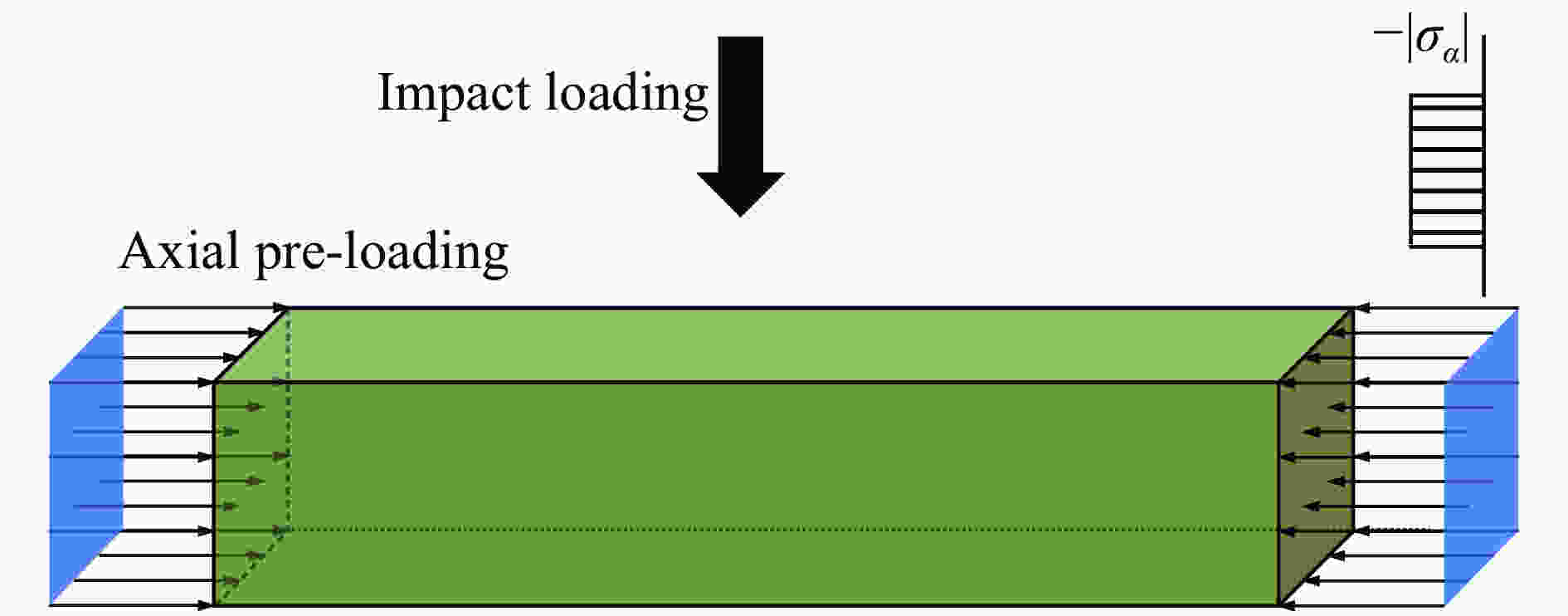
 下载:
下载:
